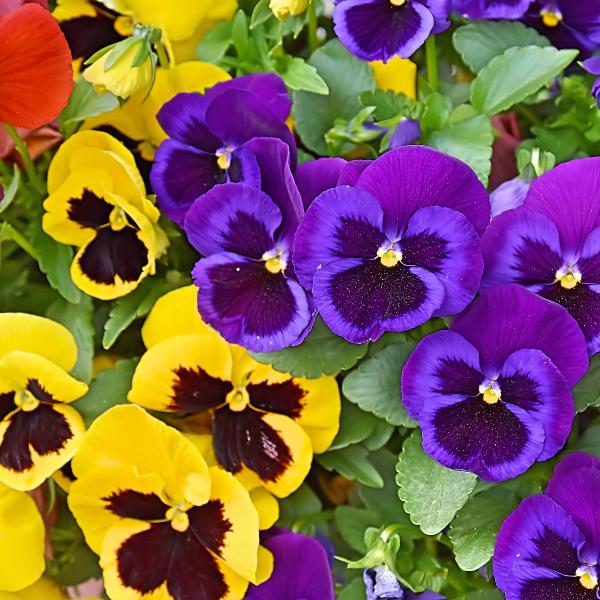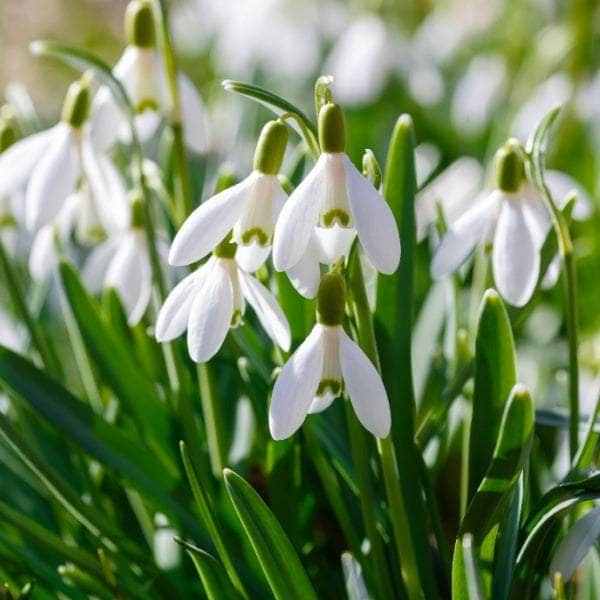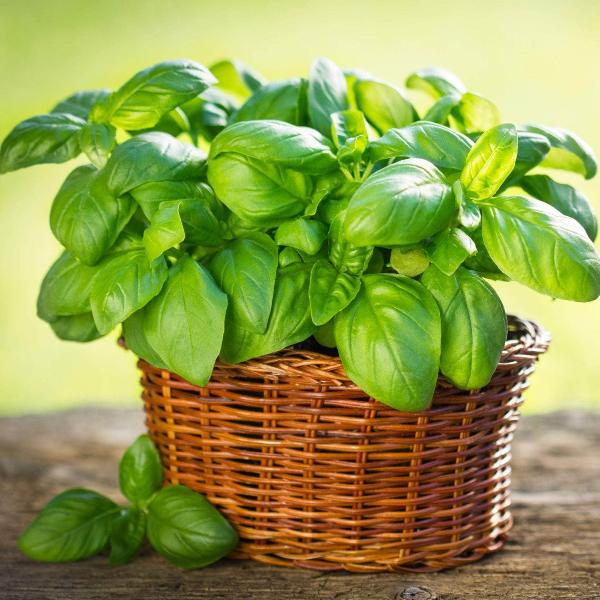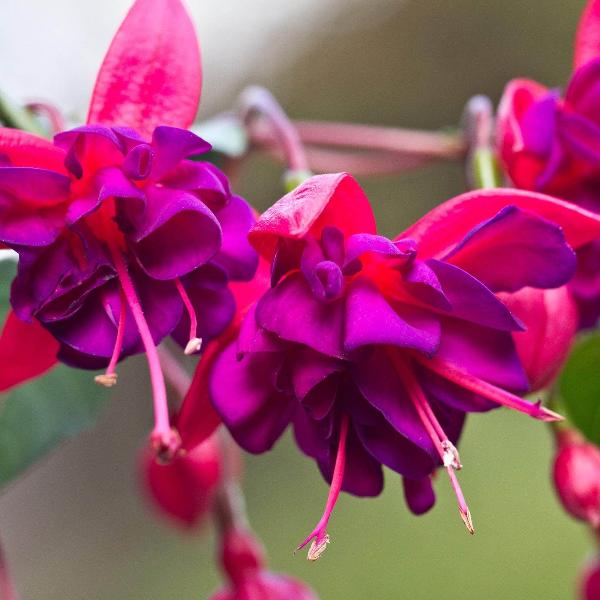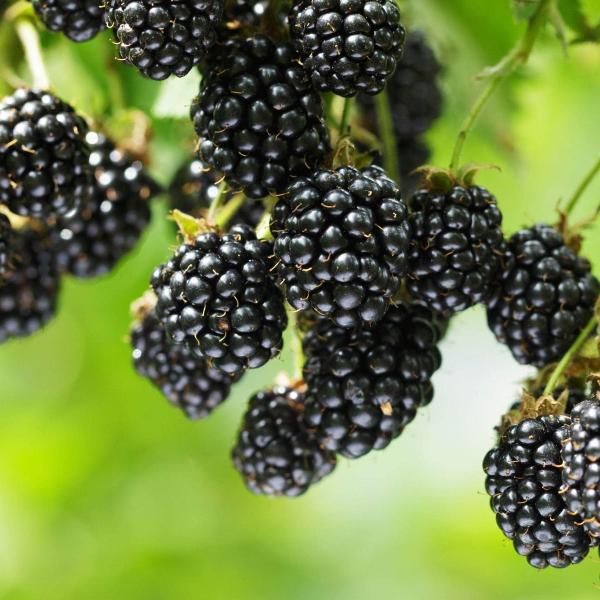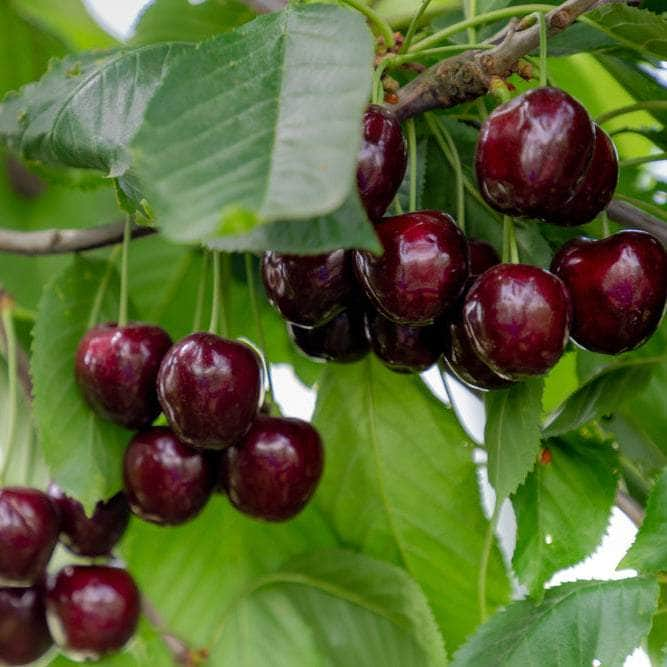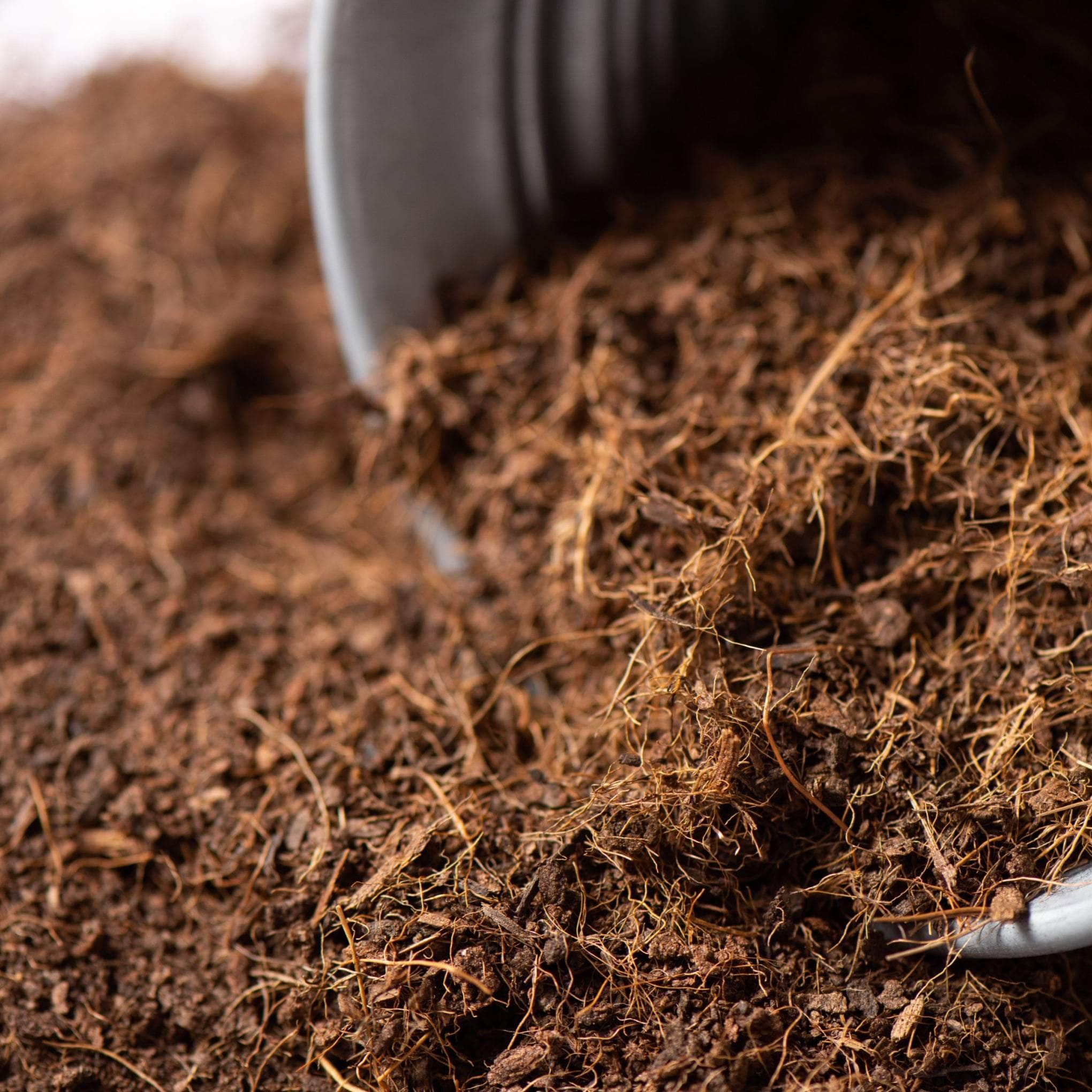The Comprehensive Guide to Growing Radicchio Plants
Welcome to our comprehensive guide on growing Radicchio plants, a cool-weather vegetable that's a fantastic addition to any home vegetable garden. This hardy perennial crop, a cultivated form of chicory, is not just a feast for the eyes with its vibrant purple heads, but also a delight for the palate, offering a unique bitter flavour that can be sweetened with the right care.
Whether you're an organic grower or a new gardener, we've got you covered. From selecting the right radicchio seeds to sow in early spring or late summer, to expert tips on how to harvest the entire leafy head without losing its flavour, we'll guide you through every step.
But that's not all. We'll also help you troubleshoot common gardening issues, like leaf spot, and share insights on how to keep your radicchio plants thriving in full sun or afternoon shade.
So, let's dive in and explore the world of radicchio together. Your journey to becoming a radicchio expert starts here!
Understanding Radicchio: A Quick Guide

Radicchio, a vibrant, bitter delight, is a culinary gem that often goes unnoticed. This guide aims to shed light on this unique plant, its characteristics, and how to grow it in your own garden. As we delve into understanding radicchio, we'll explore its origins, its unique flavour profile, and its versatility in the kitchen.
This cool season crop, often mistaken for a small red cabbage, is a form of chicory that brings a burst of colour and a distinct bitter flavour to your dishes. Whether you're a seasoned gardener or a culinary enthusiast looking to expand your palate, this guide will help you appreciate the beauty and complexity of the radicchio plant.
What is Radicchio?
Radicchio, that's the star of our discussion today. If the word 'radicchio' has you baffled, you are not alone. So, let's first unlock the mystery - what is radicchio? It's a lovely form of chicory, with an unforgettable bitter flavour that either makes people fall madly in love with it, or wonder why it was ever grown.
The culinary world often dubs radicchio as Italian chicory, and the pronunciation of it (rah-DEEK-ee-oh) itself rings an Italian bell. Part of the Asteraceae family, which include sunflowers and dandelions, radicchio is a pleasantly bitter delight that we generally encounter as vibrant salad leaves with distinct white veins over a gorgeous purple head.
Growing largely during the cool season, the radicchio plant is a cultivated variety of the wild chicory plant Cichorium intybus. It’s usually treated as an annual and harvested in its first year of growth, however, if left unrestrained, it blooms in its second year, creates seeds and then dies away.
In the Veneto region of north-eastern Italy, where it was first cultivated, towns have their revered heirloom types of radicchio. Such is the case for the Chioggia variety, the most common type found in the U.S., which looks similar to a small red cabbage. Radicchio sure gives a new meaning to leaf flavour!
The Unique Characteristics of Radicchio
The radicchio plant, often mistaken for cabbage due to its purple head, shares some unique characteristics. These characteristics are what gives it its compelling persona in the cool season vegetable garden:
Colour and Size: The vibrant wine-red leaves of radicchio, with their white ribbed infusions, provide an eye-catching contrast in any garden. Their compact size is another distinctive feature. Typically, a fully grown radicchio head is about the size of an orange or a grapefruit.
Flavour Profile: The tangible bitter flavour sets radicchio apart. The flavour sweetens as the weather cools, making it a perfect add-on for winter dishes.
Versatility in Dishes: The radicchio plant, whether used as individual leaves or as an entire head, can be consumed both raw or cooked. This offers a wide range of culinary possibilities. Including blending it with milder lettuces and greens for a fresh salad, roasting, grilling, sautéing or frying radicchio as a part of warm dishes.
Nutrient Rich: Radicchio does not just offer a burst of colour and flavour, it is also a powerhouse of nutrients. It includes high sugar content, which balances the bitter taste. Tossing raw leaves with a little olive oil and salt draws out this sweetness, enhancing the overall dining experience.
Closely Related to Chicory: As a form of chicory, radicchio could be used as a chicory or endive substitute in various recipes. This lends a new dimension to its usage and versatility.
In a nutshell, if you're pondering over what to grow in the cool season, the radicchio plant might just be a unique and delightful addition to your garden.
How to Plant Radicchio Seeds

Planting radicchio seeds is a rewarding process that requires careful planning and execution. This section will guide you through the process of how to plant radicchio seeds, from selecting the right variety to sowing them in your garden.
Radicchio, a hardy perennial crop, is a fantastic addition to any garden, especially for those who appreciate cool-weather vegetables. The process of planting radicchio seeds involves several steps, including choosing the right seeds, understanding the ideal planting time based on your climate, and preparing your garden for planting. Let's delve into the details.
Choosing the Right Radicchio Seeds
The process of growing Radicchio plants begins with understanding how to select the right seeds, which is a crucial step that can determine the success or failure of your gardening endeavour. In this section, we'll focus on enlightening you about what to look for when choosing the right radicchio seeds.
It's important to understand that radicchio seeds, just like any other plant seeds, come in a plethora of varieties, each exhibiting unique characteristics. Generally, when you browse through various radicchio seed selections, you're likely to come across seeds categorised based on their specific cultivar and time to maturity, generally between 65 to 90 days. For example, the 'seed bel fiore radicchio' variety is common and normally requires quite a warm climate to thrive.
When you're selecting your radicchio seeds, climate consideration should be your first priority. The key point here is that radicchio thrives in full sun. However, in warmer regions, it'll also tolerate partial shade. So, if you're in a region with overwhelming summer heat, opting for a heat-tolerant variety could increase your chances of successful growth.
Furthermore, radicchio seeds often offer different visual results. Some varieties start green and turn red as they mature, others remain green throughout, while some begin red. You choice should be based on your desired aesthetic outcome. Moreover, growing conditions such as sun exposure can affect your radicchio's colour transformation, so be prepared for some surprising results even after correct seed selection.
Ultimately, the best way to choose the right radicchio seeds is to understand your climate conditions, acknowledge your aesthetic preferences, and do a little bit of research to find a reliable supply source. Also, be ready for a bit of trial and error, and don't get discouraged if your first try doesn't yield the ideal crop. With persistence and learning, you're bound to succeed.
Steps to Sow Radicchio Seeds
In order to successfully sow your radicchio seeds, the following steps need to be taken into serious consideration.
Select a Sowing Time Based on Your Location: In weather-challenged climates, it's best to sow radicchio seeds in early spring (about 2-3 weeks before the last frost) for a late summer yield. For warmer climates, it's ideal to plant in the latter part of the summer for an autumn or early winter harvest.
Choose a Sunny Spot: Radicchio thrives in sunny environments. However, if you intend to plant during the late summer, a partially shaded location could be more beneficial as it will aid in decreasing the seedlings' exposure to intense summer heat.
Prepare Your Soil: The perfect soil for radicchio is loose and well-drained. Your garden's soil must be fertile and loamy with a pH level that falls between 6.5 and 8.0. In addition, enrich your soil by adding organic substances like compost or manure to enhance its fertility.
The growing process doesn't end once your seeds are in the soil. Be sure to continue caring for your radicchio plants until it's time to harvest. Always check your soil's moisture level and never leave it oversaturated. Plus, a layer of organic mulch aids in defeating weeds and retaining moisture in the soil, helping it stay cool. Around four weeks in, a dash of nitrogen-based fertiliser will boost your plants' growing speed, but be careful not to overdo it.
Radicchio Soil, Planting, and Care

In the journey of growing radicchio, understanding the soil, planting, and care requirements is crucial. This section will delve into the specifics of these aspects, providing you with a comprehensive guide to ensure your radicchio plants thrive. From preparing the soil to planting and caring for your radicchio, we'll cover all the bases.
Radicchio, a leafy vegetable known for its distinctive taste and vibrant colour, requires specific conditions to grow. It thrives in cooler seasons, such as late summer and early spring, and prefers full sun exposure with a bit of afternoon shade. The soil, planting, and care process is a delicate balance that, when done right, can yield a bountiful harvest of this unique vegetable. Let's explore these aspects in detail.
Preparing the Soil for Radicchio Planting
Getting the soil ready for planting radicchio plants begins with understanding the plant's soil preference. Knowing that radicchio loves fertile, loamy soil with a pH level between 6.5 and 8.0 will give your radicchio plants the best chance to grow and thrive. This type of soil has excellent water retention and drainage properties, both essential for the plant's well-being.
A critical step to prepare the soil is to enrich it with organic matters like aged compost or manure. It provides the soil with additional nutrients and improves its texture and water-holding abilities. Depending on your location and soil type, you may need to make some amendments like sand to aid in good drainage.
Location of your plant bed also matters quite a bit. Radicchio prefers a sunny location. But, if you reside in warmer regions and plan on planting radicchio in late summer, picking an area with afternoon shade would be judicious. It would help keep your seedlings cool during the scorching summer temperatures.
Spacing the seeds appropriately is the last tip under preparing the ground. Sow seeds a quarter of an inch deep and space them eight to 12 inches apart to ensure each radicchio plant gets the required space to develop. Rows, on the other hand, should be 15 to 18 inches apart. By following these soil, location, and spacing instructions, you'll have prepared the perfect garden plot to start planting radicchio.
Planting Radicchio in the Garden
Radicchio, a hardy perennial crop, prefers cool weather and can be successfully cultivated in your garden with a carefully considered planting strategy.
Choose the Right Timing. Based on your climate zone, you're going to determine the best time to plant your radicchio seeds. For cool-weather climates, sowing occurs in early spring, about two to three weeks prior to the last frost, for a late summer harvest. Warmer regions, you're best to plant in late summer for either an autumn harvest or early winter harvest, hence the dichotomy in planting strategy.
Location. Radicchio thrives in a full sun environment. Aim for an area that is sun-drenched, though it's alright if this is a partial shade location, especially if you're planting in late summer for an autumn or winter crop. The shade will help provide some respite from the higher summer temperatures for your radicchio plants.
Soil Preparation. Radicchio isn't too demanding when it comes to its soil requirements and can grow well in loose, well-drained soil. Enrich your soil by adding some much-needed nutrients with organic matter like aged compost or manure, ensuring you've got fertile, loamy soil with a pH level ranging from 6.5 - 8.0.
The success of your radicchio cultivation relies greatly on taking these factors into account. As they say, the devil is in the detail. Whether it's nailing the right timing, picking the right location with ample sun exposure, ensuring your soil is adequately prepared and enriched, and giving your plants the right amount of space to grow uninhibited, these are some of the key aspects of successfully planting radicchio in your garden.
Caring for Your Radicchio Plants
Watering Radicchio - Radicchio requires steady hydration during its growth period. Aim for about one to one-and-a-half inches of water weekly. A drip irrigation system is most beneficial as it prevents soil displacement and keeps the plant's leaves dry, reducing disease susceptibility.
Mulching - Add a two to three-inch layer of organic mulch around your radicchio plants. This performs two crucial roles. Firstly, it suppresses weed growth, reducing competition for nutrients. Secondly, it assists with moisture retention, maintaining cooler soil temperatures.
Fertilizing Practices - Four weeks after planting, apply a modest quantity of nitrogen-based fertilizer. Radicchio plants react poorly to nitrogen excess; it can induce premature bolting and lead to a bitterer flavour.
Monitoring Diseases and Pests - Lookout for diseases such as black rot, downy mildew, and leaf spot varieties. Avoid damp leaves, ensure excellent air circulation, and a weed-free garden to ward off illnesses. Persistent issues may require a copper-based pesticide. Similarly, common pests like aphids and slugs may infest the radicchio. Use insecticidal soap for aphids while handpicking or using coffee ground barriers can deter slugs.
Sunlight and Temperature Conditions - Radicchio needs full sun to a combination of full sun and partial shade, depending on the climate. It is heat-sensitive; beyond 75°F, growth may become stunted or bolt. However, radicchio can tolerate temperatures dropping down to 20°F. Cool climates are favourable, especially for cultivating heat-tolerant varieties.
Always remember, caring for your radicchio plant involves a balance of regular watering, careful fertilising, and implementing robust disease and pest management while providing adequate sunlight and maintaining the right temperature.
Growing Radicchio: A Quick Guide

Growing radicchio can be a rewarding experience, especially for those who appreciate the unique, slightly bitter taste of this vibrant vegetable. This quick guide to growing radicchio will provide you with the essential knowledge you need to successfully cultivate this cool-season crop in your home vegetable garden.
Radicchio, with its striking purple leaves, not only adds a pop of colour to your garden but also brings a distinct flavour to your kitchen. Whether you're a seasoned gardener or a beginner, growing radicchio can be a fun and fruitful endeavour. Let's delve into the process and learn how to make the most of your radicchio growing journey.
Ideal Conditions for Growing Radicchio
Understanding the ideal conditions for growing radicchio forms the crux of your gardening success. Radicchio, or Cichorium intybus as it's scientifically known, is a hardy perennial - a prime pick for green thumbs seeking to add a cool-weather vegetable to their home gardens. Planting time for this vegetable varies depending on your climate zone. In colder regions, sow your radicchio seeds in early spring, a couple of weeks before the last frost sinks in, setting your sights on a late summer harvest.
Radicchio's growth thrives in full sunlight, but a location with partial shade can also be suitable, especially for late summer plantings intended for autumn or winter harvests. The shade provides a cooling effect mitigating the high summer temperatures. When growing radicchio, the most detrimental factor can be heat. The plants may bolt or experience stunted growth if the air temperature spikes above 75°F. On the converse, radicchio can survive freezing temps as low as 20°F, making it rather resilient in chilly conditions.
The soil is equally important. Loose, well-drained soil provides an optimal environment for radicchio's roots. Ensure that your garden carries fertile, loamy soil, maintaining a pH level ranging from 6.5 to 8.0. To boost your soil's quality, integrate it with organic matter like manure or well-aged compost.
Lastly, attention must be given to watering. Radicchio's balanced growth needs moist soil - drying out can make the plants bitter and slow their growth. Regulating the soil wetness to an equivalent of a well-wrung out sponge is ideal. Watering requirements generally translate to an inch or two each week, rain-dependent.
By aligning your gardening practices with these conditions, you'll gear up for a successful radicchio growing season.
Tips for a Successful Radicchio Growth
Consistent Hydration: Make sure your radicchio always has access to water. Consistent hydration is essential for the growth of radicchio. An ideal amount is about one to one and a half inches of water per week. Avoid over-saturating the soil; instead, aim for a consistency similar to a well-wrung out sponge. Using a drip irrigation system can help ensure optimal water distribution without disturbing the soil.
Mulching: A thick layer of organic mulch, about two to three inches, can be a radicchio plant's best friend. Mulching not only suppresses weed growth but also ensures moisture retention and helps keep the soil cool.
Fertilize After Four Weeks: A small dose of nitrogen-based fertilizer can give your radicchio a growth boost. Be careful not to overuse it, as too much nitrogen can cause bolting and a bitter taste in your radicchio.
Pest and Disease Monitoring: Radicchio plants can fall victim to diseases like black rot, downy mildew, bacterial leaf spot, and Alternaria leaf spot. They can also become infested by pests such as aphids, cabbage loopers, slugs, and leafminers. To prevent these threats, ensure good air circulation in the garden, keep the leaves dry, and maintain an environment free of weeds. If your plants do get infected, quickly remove the contaminated leaves and consider using a copper-based pesticide, if necessary.
The most important tip when growing radicchio is to keep them cool and well hydrated. With the right care and attention, your radicchio crops can be a fantastic addition to your home vegetable garden. Enjoy the process, and in time, you'll have a home-grown, healthy vegetable right at your disposal.
Troubleshooting Common Radicchio Growing Issues

Growing radicchio can be a rewarding experience, but like any gardening endeavour, it comes with its own set of challenges. The journey from seedling to harvest is not always smooth sailing, and you may encounter a few bumps along the way. This section aims to guide you through some of the common issues you might face while growing radicchio and provide you with the knowledge to troubleshoot effectively.
Radicchio, despite its robust nature, can be susceptible to a variety of pests and diseases. From leaf spot to aphid infestations, these issues can hinder your plant's growth and affect your yield. However, with the right approach and a keen eye, you can ensure your radicchio plants remain healthy and productive. Let's delve into the world of radicchio growing issues and explore how to tackle them head-on.
Identifying and Addressing Common Radicchio Problems
To cultivate a fruitful organic garden, even an expert gardener needs to be well-prepared for potential problems. Particularly with the radicchio plant, which is susceptible to several pests and diseases, it's crucial to monitor your plants regularly and know how to treat them in case of a gardening issue. Here are the top four problems a new organic grower may encounter, along with some expert tips to deal with them.
1. Black Rot
This disease manifests as blackened, wilted leaves, mostly at the plant base. It's caused by a bacterium prevalent in wet, warm weather. To combat it, ensure your plants have good air circulation and aren’t excessively damp. Infected plants should be removed promptly to prevent the disease's spread.
2. Downy Mildew
Identifiable by patchy, yellowish marks on the leaf tops and fuzzy, white mould on the leaf undersides, Downy mildew thrives in damp, cool climates. Be proactive in preventing this disease by keeping the foliage dry and eradicating infected leaves swiftly.
3. Aphids and Leafminers
These tiny pests can silently wreak havoc on your radicchio. Aphids suck sap and cause leaf curling, while leafminers create winding, silver-white trails on your leaves. Control these pests with insecticidal soap or introduce beneficial insects like ladybugs that feed on them.
Every challenge you encounter is a learning opportunity on your journey to becoming a seasoned organic grower. Stick with it, take note of these expert tips, and you'll see your radicchio thrive!
Harvesting and Storing Radicchio

Harvesting and storing radicchio is an art that requires a delicate balance of timing and care. This section will guide you through the process, ensuring that you get the most out of your home-grown radicchio. From knowing when to harvest the entire head to understanding how to sweeten the leaf flavour, we'll cover it all.
Remember, radicchio is not just another plant in the garden. It's a vegetable that you've nurtured with hard work and care. So, let's dive in and learn how to harvest and store radicchio effectively, ensuring that you enjoy the fruits of your labour in the best possible way.
When and How to Harvest Radicchio
Growing radicchio at home always strikes an excitement chord when it's time to harvest. Being a home vegetable gardener, it's important to employ careful measures to ensure the best quality yield and to sweeten the leaf flavour while harvesting. Generally, you're looking at a span of around five to six weeks from planting before you can start taking the leaves. However, if you want to harvest the entire head, a bit of patience is required as it might take up to nine to 13 weeks.
Equipped with a firm feel to touch, the head is ready for harvest, and the delay beyond this stage could lead to an undesirable bitter taste and tough texture. So right timing is pivotal. As you embark on the harvesting journey, always spare a thought for those delicate radicchio at Bonnie plants. Approach them with the gentleness they deserve.
A good technique during harvest is to examine each leaf before plucking. Precisely sever or break off the leaves one at a time in cases where you only aim for the leaves. In situations where you desire the whole head, take the head off from the roots, slicing it right above ground level. Remember to handle them carefully because they are not just any plant in the garden but the radicchios nurtured with hard work and care.
Foregoing the harvest could result in an over-mature crop that comes with a biting bitter flavour. Therefore, when the heads have attained the recommended size on your seed package, it's time to get the kitchen ready. On the other hand, there's another camp that advocates harvesting early. They argue that once the plants remain rooted, the leaves could get increasingly bitter. So, to summarise, harvesting radicchios is a delicate balance between patient waiting and timely initiative. Be watchful, exercise discretion, and enjoy the fruits of your labour.
Storing and Using Harvested Radicchio
Here are some top tips for storing and using harvested radicchio effectively:
Storage: After you harvest radicchio, store it in a perforated plastic bag and place it in your refrigerator. Generally, radicchio can last in good condition for three to four weeks.
Ethylene Risk: Avoid storing radicchio near fruits like apples or pears. These fruits release ethylene, a natural gas, which can enhance the bitter flavour of your radicchio.
Eating Bolted Plants: If your radicchio plants happen to bolt, do not worry. The flowers are edible and can offer a flavour that is a sweet blend of honey and apple with a touch of bitterness.
Use in Salads: If you are thinking of ways to use radicchio, try it raw in your salads. Mix it with other greens such as Belgian endive and dress it with hazelnuts and a sweet dressing of your choice. This will effectively counteract and balance the bitter flavour.
Cooking Radicchio: You can also explore cooking options. Sauté radicchio leaves with olive oil and add some salt to create a delicious snack or a side dish to your main meal.
These tips will surely help you make the most out of your home-grown radicchio harvest. Enjoy the crisp texture and complex flavours of this wonderful vegetable in your own kitchen!
Embracing the Challenge of Growing Radicchio

Growing radicchio plants can indeed be a challenge, but it's one that's well worth embracing. With its unique bitter flavour and vibrant purple heads, radicchio adds a touch of gourmet sophistication to any home vegetable garden.
The key to success lies in understanding the plant's needs and meeting them consistently. From selecting the right radicchio seeds to knowing when to sow them for a late summer or early spring harvest, every step matters.
Remember, radicchio thrives in cool weather and full sun, but it also appreciates a bit of afternoon shade in warmer climates. In conclusion, growing radicchio may require a bit of effort, but the rewards are plentiful.
So why not take on the challenge?
With the expert tips provided in this comprehensive guide, you're well-equipped to cultivate this form of chicory successfully in your garden. Happy gardening!




